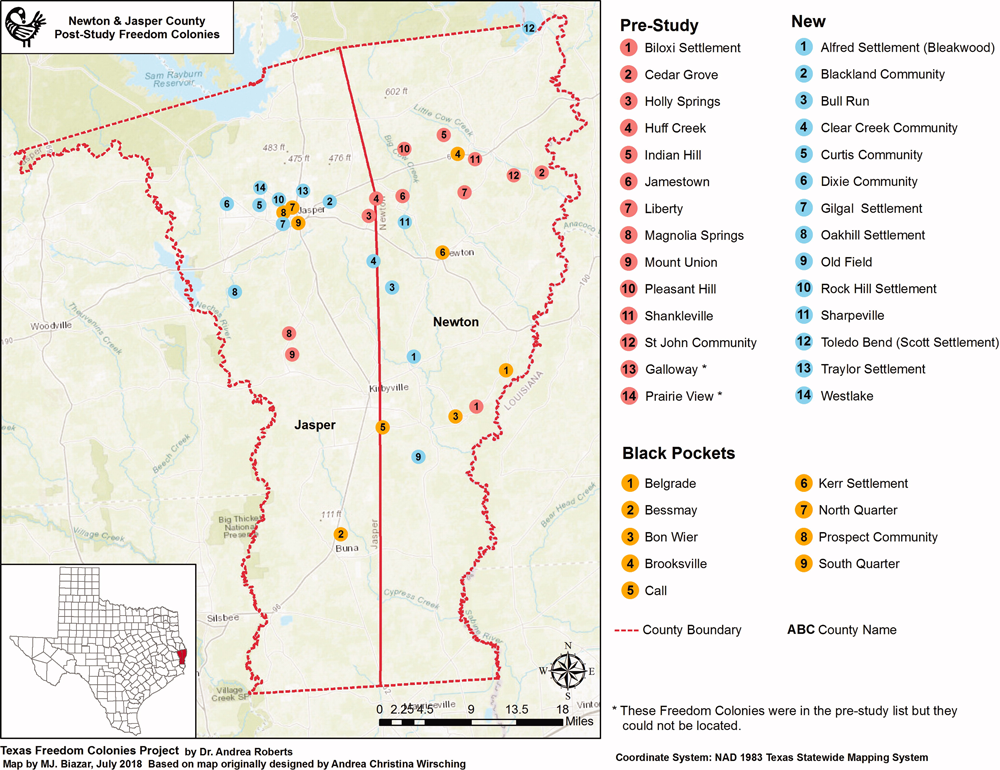Uncovering JAPA
Research That Retrieves Lost Memories of Place

What happens when the cartographic memory of a place has been erased? Could Participatory Action Research (PAR) be used in historic preservation to maintain that forgotten heritage?
In "Remixing as Praxis," from the Journal of the American Planning Association (Vol. 85, No. 3), authors Andrea Roberts and Grace Kelly studied how action researchers can work with communities to preserve historic Black settlement heritage.
Empowering Communities Through Participatory Research
Roberts co-planned a forum with the descendants of Freedom Colonies, settlements founded by former slaves between 1865 and 1920 in Texas. The findings suggest that action researchers and preservationists must constantly change their roles in the hierarchy of Sherry Arnstein's ladder of citizen participation when working in marginalized communities. The article defines this as remixing — the strategic mix of action research, local knowledge, and the researcher's expertise that results in community empowerment.
This model of engagement with citizens also celebrates storytelling, which is a theme carried throughout this article. With the usage of the term remix, Roberts evoked a form of storytelling ingrained in African American culture: hip-hop. Hip-hop artists described the remixing process, "as layering multiple musical pieces to create what Chuck D and Public Enemy's production team called 'collages.'"
Roberts and Kelly sought to assess the capacity of the descendants of these Freedom Colonies and their needs to preserve the heritage of those places. They focused their research on the historic town of Shankleville, Texas, which was founded in 1867 by a fugitive slave, James Shankle, and they worked with grassroots preservationist and descendant of James Shankle, Lareatha Clay. Though Clay had never lived in Shankleville full-time, she considered it to be home and founded the Texas Purple Hull Pea Festival in the community.

Mount Zion Christian Methodist Episcopal Church, Shankleville, Texas, and the 2015 purple hull pea festival sign. Figure 5 from "Remixing as Praxis," in the Journal of the American Planning Association, Vol. 85, No. 3.
Revitalizing History Through Storytelling Symposium
The purple hull pea originated in Niger and is known as cowpea because it was often fed to livestock. However, it became part of the culinary tradition of the region. The festival offered Roberts the opportunity to collaborate with Lareatha Clay and other descendants to discover methods to make preservation resources available to Freedom Colony descendants to preserve.
Roberts and Clay remixed their roles in developing a survey for descendants and a hybrid forum symposium, in which professionals and ordinary citizens come together to break down the divide between these groups.
The symposium was designed to reflect another form of storytelling that is present in the African American community: testimony. This form of storytelling comes from church services in which congregants are allowed to spontaneously stand and share personal news and concerns or ask for prayer. Roberts writes that this form of storytelling was used to "validate Black subjectivity and grassroots knowledge, consistent with my goal, which was centering descendants' voices." Moreover, Roberts wanted to see if "storytelling could be part of a participatory preservation model for freedom colonies."
Six descendants were invited to the symposium to collaborate as "remixers," and five attended. They were asked to speak and engage the audience for 10 to 15 minutes. The descendants told stories about their family history, how slavery shaped Texas, the demolition of historic buildings in their cities, the complications with securing funding for historic preservation, and more.
Roberts found that because the history of the Freedom Colonies is unrecorded and unmapped, storytelling and cultural performances can facilitate grassroots engagement with the community.
Community-directed Research, Bridging Gaps
This method has the power to maximize community control over the direction of their community, and allow for action researchers to fill the gaps that are needed.
Roberts's experience in co-planning with the descendants of Shanklesville and remixing Arnstein's ladder suggested that the ladder is relevant but is often mischaracterized. Arnstein often wrote that some levels on the ladder, like information sharing, are problematic. However, Roberts found: "After the descendants had spoken, experts made materials available and explained the resources and program information's utility. Expert information was valued but not at the descendants' expense."
This also allowed experts to learn from the descendants about a place that has been erased by the cartographic history of Texas.

Map of freedom colonies located in Jasper and Newton counties in Texas. Figure 1 from "Remixing as Praxis," in the Journal of the American Planning Association, Vol. 85, No. 3.
Without the descendants in this article, and the work of the authors, would any of us have known this much about Freedom Colonies like Shankleville?
The authors offer a method for researchers to rethink their practice and possibly challenge what is known. By remixing and challenging parts of Arnstein's ladder, planners and preservationists can find an ethical means to empower marginalized communities, and planners will find that storytelling can be a useful tool when used as critical knowledge.
Top image: Jim Shankle Cemetery sign in Shankleville, Texas. Photo from Find a Grave.


